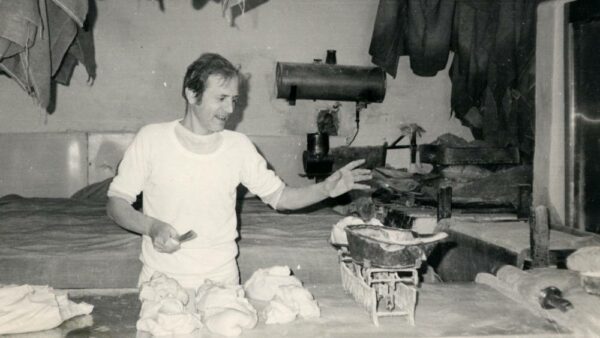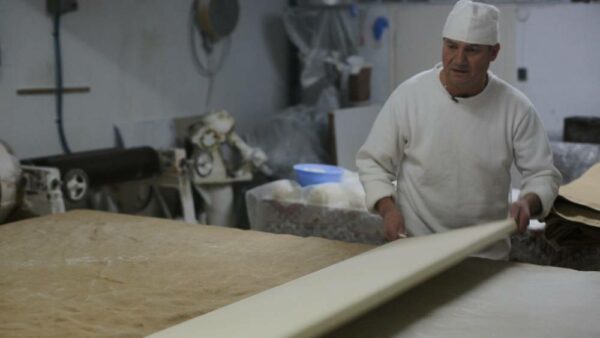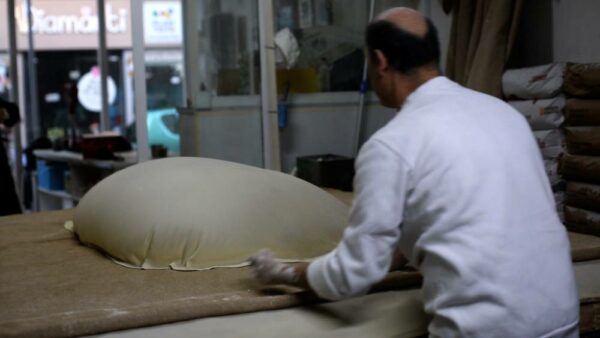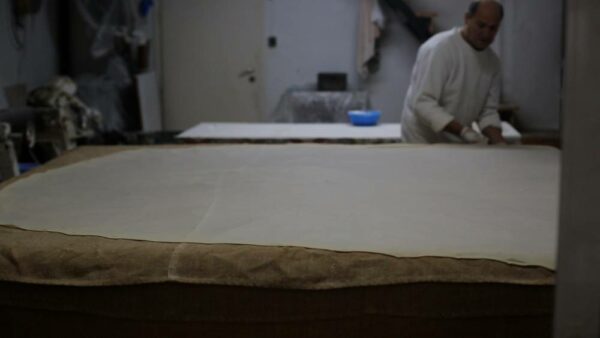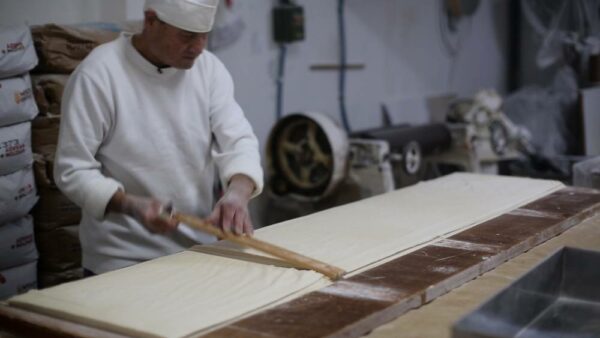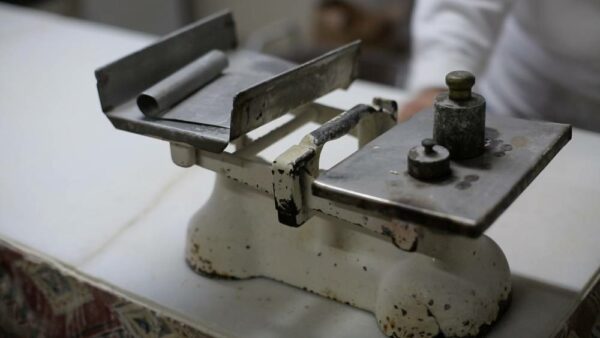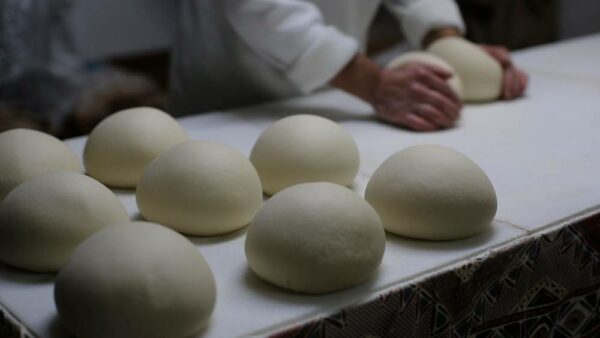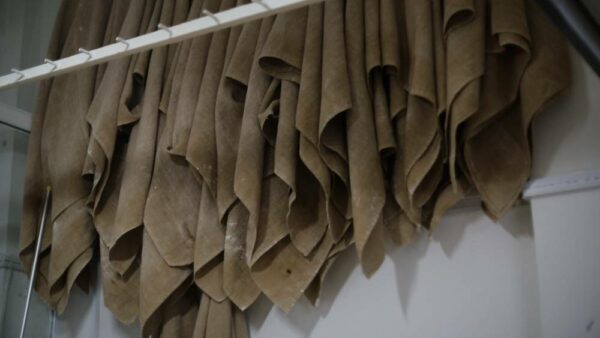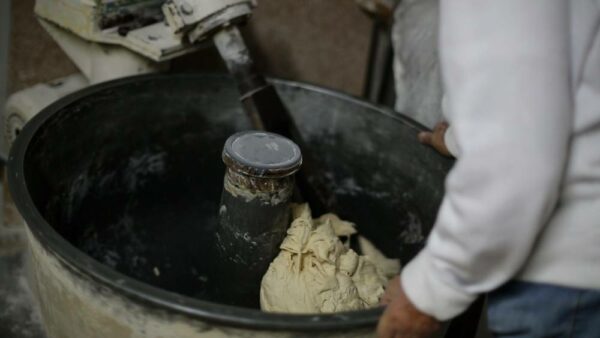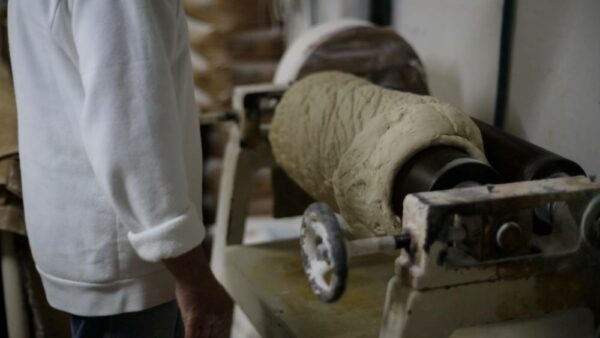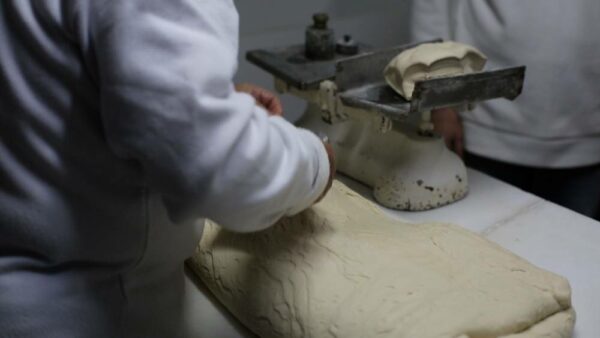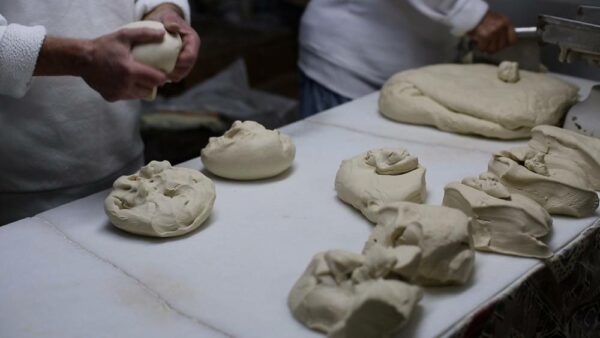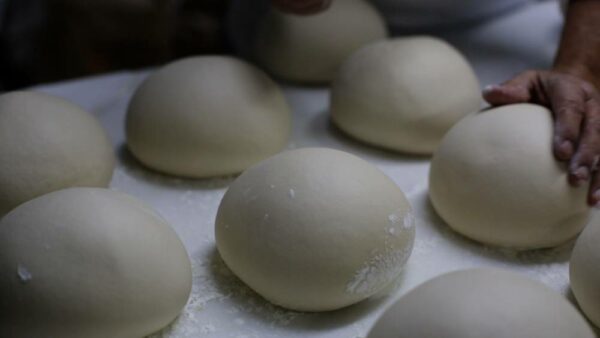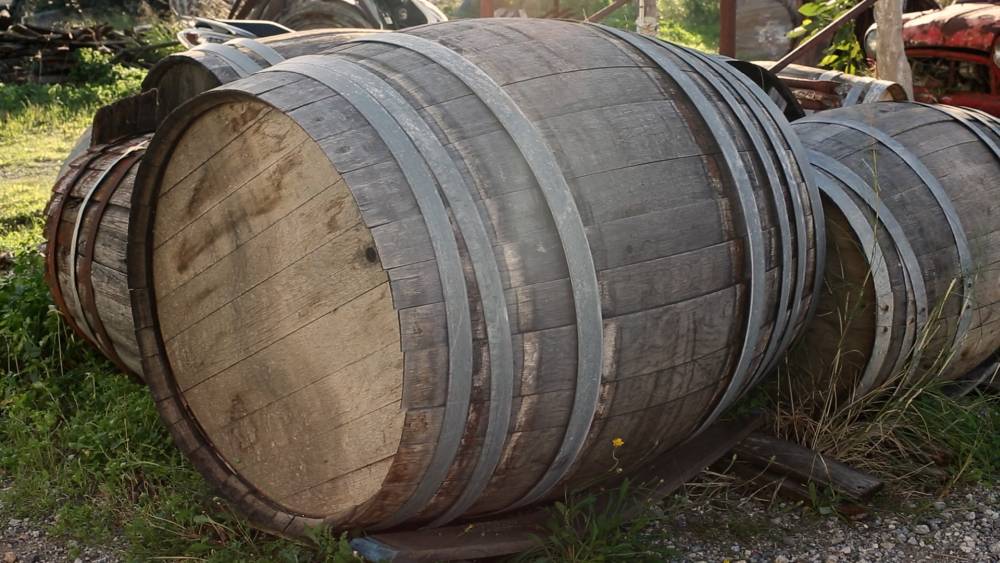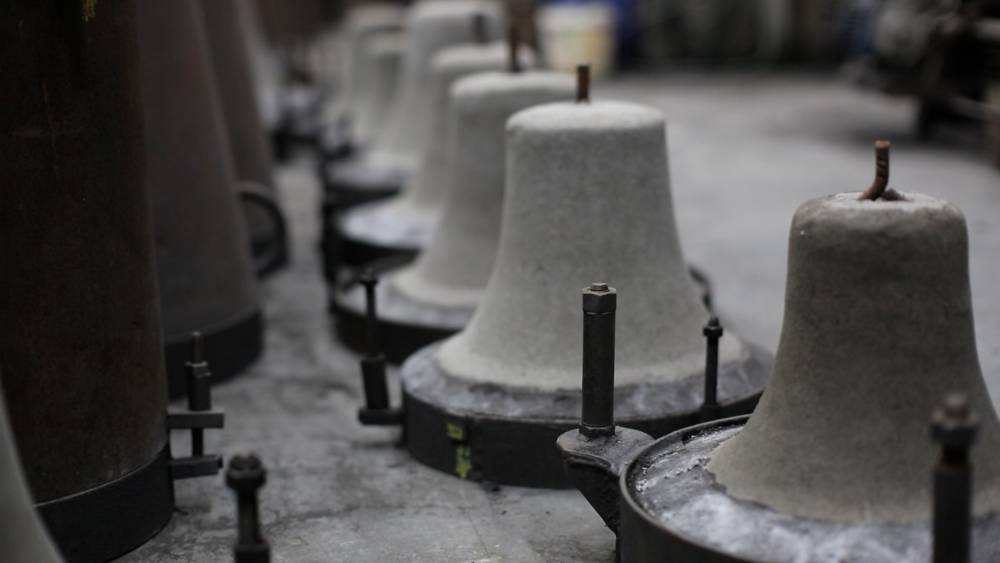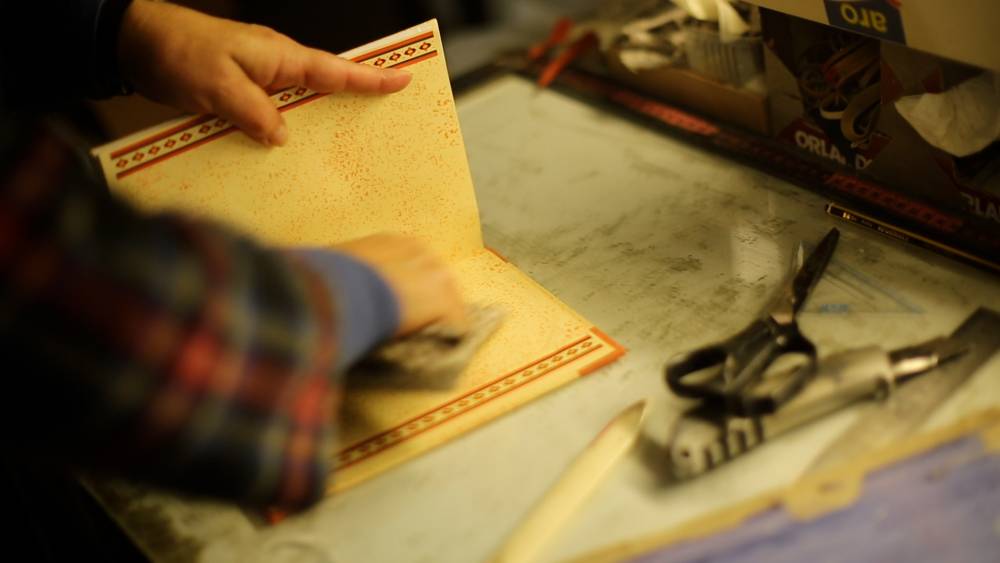Description
Cretan cuisine has been significantly influenced by neighboring cultures. Housewives still use the traditional “phyllo” in many of their sweet and savory recipes. It takes a long time to prepare phyllo and usually the process starts very early in the morning.
Initially the raw materials, ie flour, salt and water are placed in the kneader. The dough that will be produced goes through a mechanical roller where it is rolled. With the help of the roller, the dough softens. The dough is then weighed into balls, usually 1250 gr., cut into equal pieces and shaped. Then it is covered to rest.
Each piece of dough will become a large sheet. The way the phyllo is opened is impressive, as it opens in the air when the phyllo makers skillfully toss the sheet over the counter and pull on its edges.
The bench, like a huge bed, now has many sheets of phyllo spread out on it, like big sheets, one on top of the other. When all the dough is opened in a sheet, the process of kneading begins.
Each sheet is rotated on a large rectangular board where it is folded. As it folds, it is cut into four equal pieces. These pieces are put in the fridge and from there the sheet is available to customers. The sheet that the housewives take is usually used for the preparation of bougatsa cheese pie, baklava, galaktoboureko, saragli etc. In the center of the city of Chania there are still two workshops for the production of traditional phyllo, however the interest for the profession is unfortunately declining.

